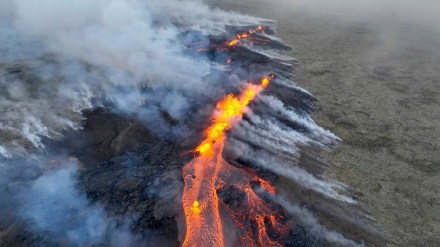Some 30 kilometers southwest of Iceland’s capital city Reykjavik, a volcanic eruption began on Monday. The eruption is in an uninhabited valley near the Litli-Hrutur mountain and has started 11 months after its last eruption officially ended.
On Tuesday, authorities alerted tourists to stay away from the place. It is spewing lava and toxic gases from a fissure.
The area is known broadly as the Fagradalsfjall volcano. In 2021 and 2022, the volcano erupted without causing damage or disruptions to flights, The place of incident is near Keflavik Airport (the international air traffic hub of Iceland). On Tuesday, the airport remained open.
According to Icelandic Meteorological Office, the blast was initially more fierce than the previous two. An aerial video clip showed streams of orange molten lava and clouds of gases spewing from a snaking fissure (nearly 900 metres long).
“Gas pollution is high around the eruption and dangerous,” the Met Office said. “Travellers are advised not to enter the area until responders have had a chance to evaluate conditions.” By Tuesday morning, the fissure and the volume of the eruption had shrunk, scientists said, reported news agency AP.
In 2021, in the same area, the eruption produced spectacular lava flows for several months. To witness this natural phenomenon, many people flocked here.
2010 witnessed the most disruptive volcanic eruption of the Eyjafjallajokull volcano. It sent huge clouds of ash into the atmosphere. It also resulted in widespread airspace closures over Europe. Iceland witnesses an eruption every four to five years. The country sits above a volcanic hot spot in the North Atlantic.
